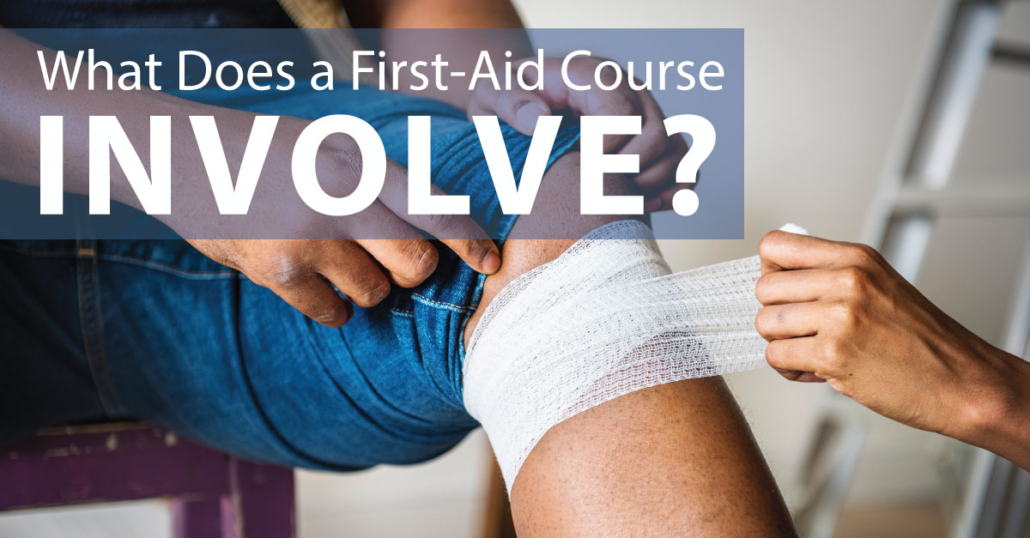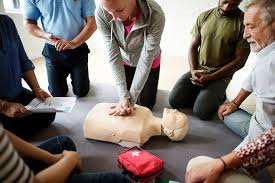Introduction
In a world where emergencies can strike at any moment, having the abilities and understanding to react properly is not just an advantage; it's frequently a requirement. Ending up being certified in emergency treatment can transform any individual from an amateur right into a hero. This short article explores the extensive impact that acquiring an emergency treatment certification can carry individuals and neighborhoods alike. Whether you are taking into consideration enrolling in a first aid course, looking for to boost your job, or simply wishing to be better gotten ready for unforeseen situations, this extensive guide will certainly provide valuable insights right into the life-changing benefits of first aid training.
What is a First Aid Course?
A first aid course is made to gear up participants with the necessary abilities needed to analyze and handle medical emergency situations till specialist help shows up. These programs cover First Aid Course Canberra various subjects, including injury care, CPR (Cardiopulmonary Resuscitation), choking relief, and extra.
Importance of First Aid Training
Why is initial help training so crucial? Below are some compelling factors:
- Immediate Response: In emergency situations, every second matters. Understanding just how to provide first aid can save lives. Confidence Building: Learning supplies individuals with the self-confidence to act when faced with potentially dangerous situations. Community Safety: Educated people contribute to general neighborhood safety by being gotten ready for emergencies.
Different Kinds of Emergency treatment Courses
Various types of first aid courses deal with various target markets and requirements:
Basic Emergency treatment Courses: Suitable for everybody, covering fundamental skills. Advanced First Aid Courses: Targeted towards health care specialists or those looking for even more in-depth knowledge. CPR Courses: Focus specifically on executing mouth-to-mouth resuscitation effectively.The Journey from Amateur to Hero
Understanding Your Duty as a Very First Responder
When you take a first help and CPR course, you step into the role of a first -responder. This obligation is substantial due to the fact that it suggests you may be among the very first individuals on the scene during an emergency.
What Does It Mean to Be a Very first Responder?
Being a very first -responder requires:
- Assessing the situation quickly Making notified decisions Providing preliminary care up until specialist help arrives
From Theory to Method: The Knowing Process
The transition from learning concept to putting it right into practice can be complicated yet unbelievably gratifying. Most courses entail hands-on training sessions where participants practice methods on mannequins or with simulations.
Hands-On Experience: A Video Game Changer
Hands-on experience permits students to:
- Build muscle mass memory Gain confidence in their abilities Understand exactly how to respond under pressure
The Life-Saving Skills Obtained With Training
CPR Techniques: More Than Simply Upper Body Compressions
One of one of the most vital parts educated in any type of CPR course is how to do cardiopulmonary resuscitation successfully.


CPR Steps Overview
Call for aid (911 or local emergency situation number). Check responsiveness. Begin chest compressions at a price of 100-120 per minute. Provide rescue breaths if trained.Wound Management and Bandaging Skills
Knowing how to deal with wounds properly can prevent infections and more complications.
Simple Strategies for Wound Care
- Clean the wound making use of mild soap and water. Apply antiseptic ointment. Cover with clean and sterile gauze or bandage.
Real-Life Effect of Having a First Aid Certificate
Stories That Inspire Change
Countless stories illustrate just how having a first aid certification has altered lives dramatically.
Case Research study 1: A Brave Rescue at Home
Imagine going to home when your child instantly chokes on food. Many thanks to her training in a first aid course, she quickly executed back impacts, removing the food and conserving her youngster's life.
Case Research 2: Work Environment Emergency
In one more circumstance, an office worker falls down because of cardiac arrest during lunch hour. A coworker trained in mouth-to-mouth resuscitation quickly interferes, performing chest compressions that ultimately result in effective resuscitation prior to paramedics arrive.
Enhancing Job Opportunities Via Certification
How Employers Value Emergency treatment Training
In today's work market, numerous employers look positively upon candidates who have certifications in emergency treatment and CPR.
Benefits for Professionals
Having a legitimate emergency treatment certification can provide countless advantages:
- Increased employability Additional ability for career advancement Ability to contribute favorably within teams
First Help Training in Certain Professions
Certain occupations require or strongly benefit from having actually trained personnel on board:

Choosing the Right Training course for You
Factors Affecting Your Decision
When exploring options for your first aid course, take into consideration these elements:
Course Duration Certification Validity Provider Reputation Content CoveredComparing Various Organizations Offering First Aid Courses
It's essential to research different organizations before committing:
|Company|Program Type|Duration|Accreditation Legitimacy|| --------------|-------------|----------|-----------------------|| Red Cross|Fundamental|8 hours|2 years|| American Heart Organization|Advanced|16 hours|2 years|| Resident Recreation Center|Fundamental|4 hours|No expiration|
FAQ Section
Q1: What is consisted of in a common emergency treatment course?
A criterion first aid course usually includes subjects such as wound care, shock monitoring, mouth-to-mouth resuscitation methods, choking relief techniques, and injury assessment.
Q2: How long does it take to finish an emergency treatment course?
Most fundamental programs range from 4 hours as much as two days depending on whether it's an initial level or innovative training session.
Q3: Is accreditation essential after completing the course?
While certification isn't always obligatory, having it boosts your credibility as someone qualified in emergency situation action situations.
Q4: Are online emergency treatment training courses effective?
Online training courses can supply adaptability yet must preferably include useful evaluations either essentially or with set up workshops with licensed instructors.
Q5: Can I show others as soon as I have my certification?
Only if you seek extra qualifications such as instructor-level training; or else, you're equipped only for individual usage unless defined or else by your licensing organization.
Q6: Exactly how often ought to I restore my certification?
Typically every 2 years; however, specific companies could call for various revival timelines based upon updated standards or practices found out during re-certification courses.
Conclusion
Embarking on the trip from newbie to hero with obtaining a first aid certificate isn't simply regarding discovering abilities; it has to do with empowering oneself and others within communities anywhere! The expertise gained via an interesting first help and mouth-to-mouth resuscitation course improves personal self-confidence while allowing skilled action during crises-- potentially saving lives along the road! So whether you're motivated by personal growth or specialist improvement-- spending time right into comprehending these methods can truly change lives forever!
Remember-- the following time an emergency occurs around you-- your training could simply transform you right into somebody else's hero!